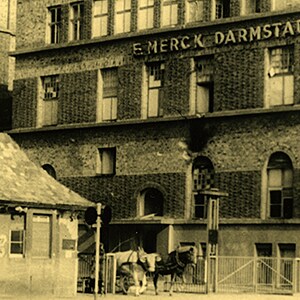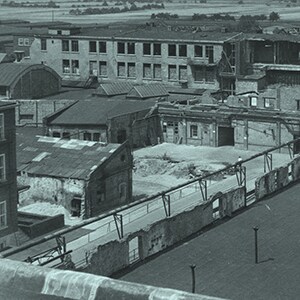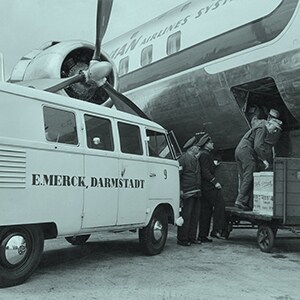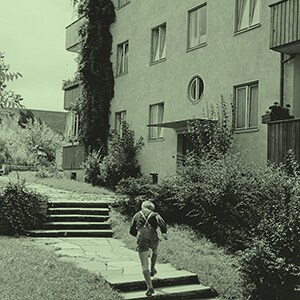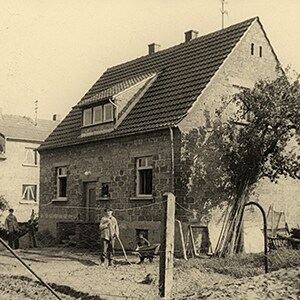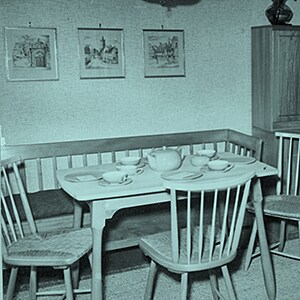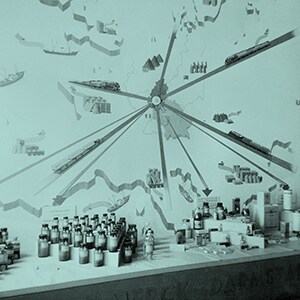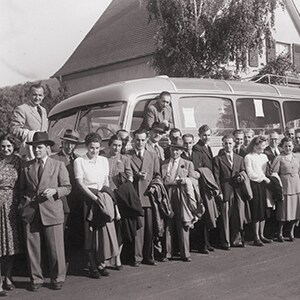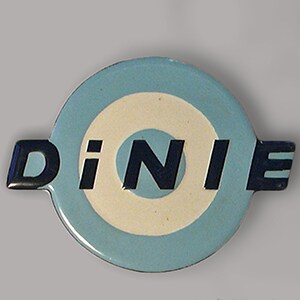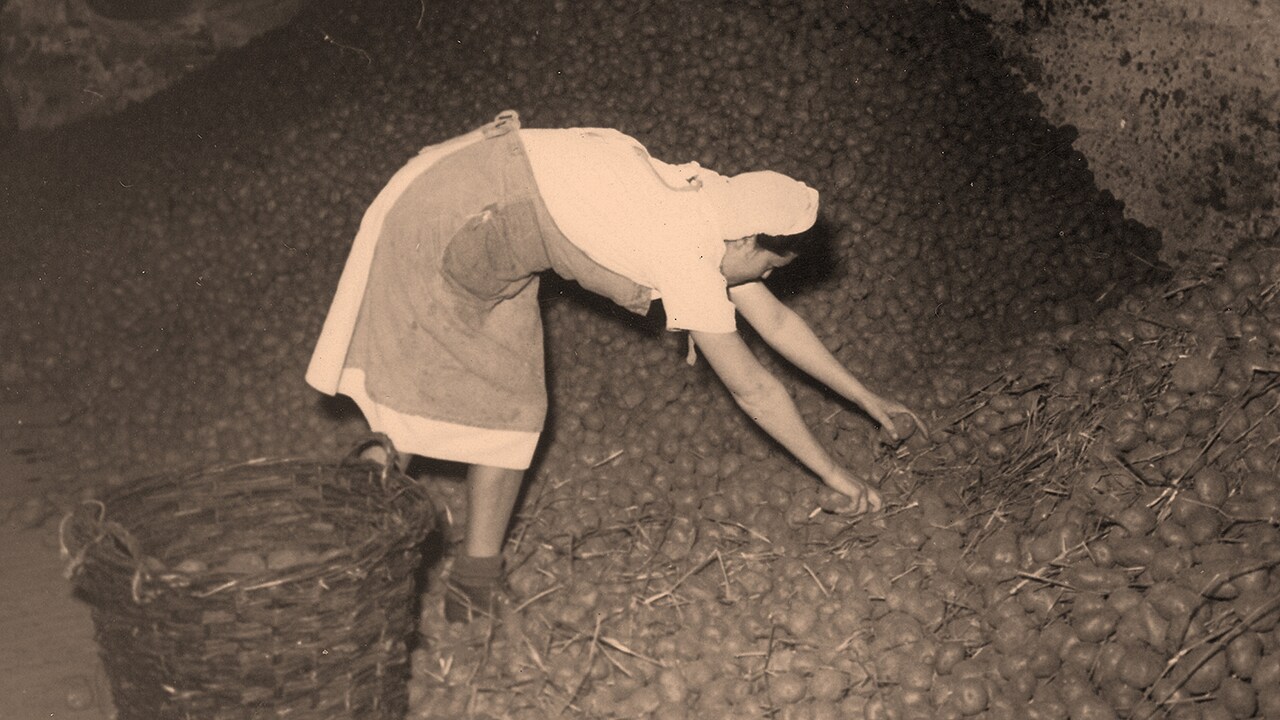
»Today, it is more important than ever […] to make the common cause one’s personal duty.«
Board of Directors minutes, April 17, 1945
In 1945, World War II, which has lasted six years, comes to an end. U.S. troops enter Darmstadt at the end of March. In Berlin, bitter battles continue to be fought until the beginning of May, and in Asia, the war does not end until August, after the dropping of two atomic bombs.
The company is still operating internationally in 1945. Consequently, the significance of this year to the company and its employee also varies greatly.
For example, little changes in Brazil. Here the subsidiary has been under state administration since 1942. A period of tremendous stagnation has set in accordingly, and »the attitude […] towards the company steadily deteriorated«, as one company employee recalls. In addition, it becomes increasingly difficult for the German company to maintain its visibility.
In Darmstadt, the first priority is clean-up work. Since December 1944, the company has been in ruins. Authority lies with the American military administration. The so-called Thousand-Year Reich thus comes to an end at E. Merck, Darmstadt, Germany, as well. In September 1945, the company’s assets are confiscated. The owners and management must be removed. An external »trustee and site manager« takes charge. Only three years later can the Merck family return to the company.
It had all begun only 12 years earlier, when Adolf Hitler and the NSDAP came to power. Under the National Labor Regulation Law, the partners Karl, Louis, Wilhelm, and Fritz Merck became the company »Führer«, the employees became their »loyal supporters«. Together, they formed the »National Socialist Works Community«. Growth, sales and employee numbers continue to increase in the 1930s. In February 1938, a major construction program for research and production is approved. But savings are also made – especially on those things that require foreign exchange.
Two years after the start of World War II, nearly 1,000 company employees are drafted as soldiers. Women are increasingly deployed in the factory. Prisoners of war and female forced laborers from many countries of Europe are assigned to the company as a manufacturer of a range of »war-relevant« products, for instance analgesics and sedatives, charcoal tablets, vitamins, pesticides, and hydrogen peroxide.
Obtaining raw material supplies becomes increasingly difficult, especially after the attack on the Soviet Union and the entry of the United States in the war. With the increasing air raids by the Allies, the fighting breaks into civilian life. In September 1944, vast sections of the city are destroyed, three months later the factory on Frankfurter Strasse is as well.
In 1945, it is time to clean up and to get production going again. Instead of trucks, horses and oxen are used. After the currency reform of 1948, the company must take out substantial loans in order to resume operations. The train station at the company is cleared of debris and ready for goods transports. In 1952, the company products are sent by plane to Japan.
The company commitment to providing company-owned apartments, dating back to the 19th century, is very important. There is a shortage. New apartment buildings are going up all over the city, and construction must be economical. Employees help themselves to overcome the housing shortage, despite the lack of capital.
In 1947, export business starts picking up again. E. Merck, Darmstadt, Germany, participates in the export trade fair in Wiesbaden, among other events. More than 50 employees work in this area in 1950. Joint outings offer a break from the work routine. In 1947, DINIE takes over all foreign companies in Argentina. The company is able to reacquire its subsidiary there in 1958.

